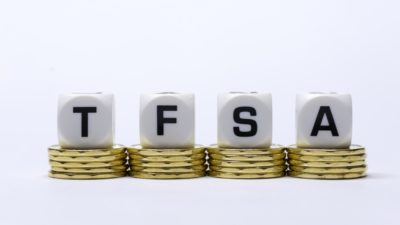Husky Energy Inc. (TSX:HSE) somewhat quietly made a couple of dividend moves in 2015.
The first was keeping the $0.30 per share dividend steady, but eliminating the cash payout. Investors would instead receive additional shares each quarter as a dividend. Although many companies allow investors to reinvest their dividends back into the company–often at a slight discount to the prevailing share price–there are very few that don’t primarily pay their dividends in cash.
Husky just didn’t have the cash flow to pay the dividend. The company knew that if it officially cut the dividend to zero, it would be booted out of many dividend mutual funds and ETFs, which would send the share price reeling. A stock dividend means it didn’t actually cut the payout. It just paid it out in a different way.
That only lasted a few months. Last week, management announced that in an effort to further shore up the balance sheet the company would be suspending its dividend until the price of oil improved. Shares slipped some 10% originally on the news, but quickly rallied higher thanks to an improvement in crude.
It might seem like shareholders are out of luck when it comes to getting paid dividends from Husky, at least in the short term. Perhaps, but there are still a couple of other ways investors can still get paid.
Investors have options
The first method is for folks who already own Husky shares. It’s called writing covered calls. Trust me, it seems more complex than it really is.
Allow me to explain using a real world example. What an investor would do is sell the April 15, 2016 call option for $18 per share. Because that option is sold rather than purchased, the investor would immediately collect the premium of $0.20 per share in their account.
Based on the current share price of $14.15 per share, and before any trading commissions, this investor has effectively created themselves a dividend of 1.4%. Do that four times a year and we’re looking at income of approximately 5.6% annually. That’s not a bad result for someone looking for a little extra cash.
But this strategy comes with some risk. In exchange for that contract premium, the seller of those calls has also pledged to sell their Husky shares at $17 on April 15 to the buyer of the calls. If Husky rallies and surpasses $17, this will look like a foolish decision. If it doesn’t, the person on the other side of that bet will allow their option to expire worthless.
Essentially, selling covered calls is a strategy that limits potential upside for more income.
Preferred shares
There’s another option for investors who want income from Husky but don’t want to actively manage options. They can just buy the preferred shares.
The Series 1 preferred shares (ticker symbol HSE.PR.A) look very attractive on the surface. The dividend is an eye-popping 12.9%.
Unfortunately, that’s a teaser rate. These are rate-reset preferred shares, which means investors can only count on the current yield until March 31, 2016. The dividend then resets to the Canadian T-Bill Rate plus a spread of 1.73%.
Which means the yield on this preferred share would be very low if it was still trading at close to its $25 issue price. But since shares are trading at only $8.65 each, it looks like investors can expect a yield of about 6% annually come April.
That’s about the same yield as a covered-call strategy with very little work. And since dividends are taxed at a lower rate than option premiums, the income investor who buys the preferred shares will end up with more after-tax income.
Just because Husky’s common share dividend is gone it doesn’t mean income investors need to avoid the stock. With a little bit of outside-the-box thinking, investors can bet on Husky’s upside while still getting paid to wait.







